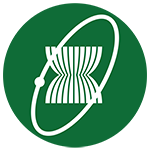SELECTIVE NON-OPERATIVE MANAGEMENT OF BLUNT ABDOMINAL TRAUMA USING COMPUTED TOMOGRAPHY
Abstract
OBJECTIVE: To determine the accuracy of computed tomography (CT) scan in the evaluation and grading of the severity of blunt abdominal organ injury for the purpose of selecting patients who can be managed conservatively. To compare the CT grading system (using organ injury scaling of the American Association for Surgery of Trauma: AAST) with the trauma score : abbreviated injury score and injury severity score (AIS, ISS) and clinical outcome in patients who were treated by conservative and surgical management.
MATERIALS AND METHODS: Twenty-two patients suspected of intraabdominal organ injury who underwent complete CT scan study from January 1994 to October 1999 were analyzed and graded according to organ injury scale (OIS) grading system (Table 1-7). The clinical records of these patients were reviewed and correlated with the CT grading system, trauma score and clinical outcome.
RESULTS: Seven patients had liver injury, four of them (58%) received conservative treatment, mean OIS=II, mean ISS=12.25. Three patients (42%) were treated by surgery, mean OIS=III, and ISS=30. One of them was operated due to jejunal perforation that was missed on initial CT scan. Four patients had splenic injury, | case (25%) had successful conservative treatment, OIS=II, ISS=9, and 3 cases (75%) underwent surgery, OIS ranged from III-IV, ISS=21.3. Three patients had pancreatic injury, 2 in the three patients (67%) had conservative treatment, OIS range II-III, ISS=9, and in the remaining one patient (33%) underwent surgery due to duodenal perforation that was missed on CT scan, OIS=II, ISS=10.Two patients in renal injury group, mean OIS ranged from I-III, ISS=7.5, had successful conservative treatment. One patient who had bladder injury, OIS=IV, ISS=21 underwent surgical management without complication. One patient with clinical suspicion of renal injury had only abdominal wall hematoma, ISS=9. Two cases were negative CT scan, had very low ISS (ISS=1). One patient with retroperitoneal hematoma received percutaneous drainage with good result.
CONCLUSION: CT scan is the investigation of choice, having high accuracy in the diagnosis and grading of the severity of blunt abdominal trauma particularly in solid organ injury. There are difference of trauma score (OIS, ISS) between patients who underwent conservative and surgical management that can be used for prediction and evaluation in the selection of non-operative management of blunt abdominal trauma.
AIS = Abbreviated Injury Score, ISS = Injury Severity Score, OIS = Organ Injury Scale
Downloads
Metrics
References
Novelline RA, Rhea JT, Bell T. Helical CT of abdominal trauma. Radiol Clin North Am 1999; 37:591-11.
Federle MP, CrassRA. Jeffery RB. Trunkey DD. Computed tomography in blunt abdominal trauma. Arch Surg 1982;117:645-5S0.
Federle MP, Jeffery RB. Hemoperitoneum studied by computed tomography. Radiology 1993:148: 187-92.
Rance C, Bear J. Computed tomography in the management of pediatric abdominal trauma. Aust NZ J. Surg 1980; 50: 506- 12.
Federle MP, Courcoulas AP. Powell M. Ferris JV, Peitzman AB. Blunt splenic injury in adult: Clinical and CT criteria for management, with emphasis on active extravasation. Radiology 1998:206: 137- 42.
West OC, Jarolink AM. Abdomen Traumatic Emergencies. In: Harris JH, Harris WH, editors. The Radiology of Emergency Medicine. 4th ed. Philadelphia: Lippincott, Williams and Wilkins; 2000.p. 689-724.
Shanmuganathan K, Mirvis SE, Sover ER. Value of contrast enhanced CT in detecting active hemorrhage in patient with blunt abdominal or pelvic trauma. AJR Am J Roentgenol 1993; 161:65-69.
Umlas SL, Cronan JJ. Can CT grading system enable prediction of successful nonsurgicat treatment. Radiology 1991;178: 481- 87.
Wing VW, Federle MP, Morris JA, Jeffrey RB, BluthR. The clinical impact of CT for blunt abdominal trauma. AJR AmJ Roentgenol 1985; 145:1191-94.
Marx JA, Moore EE, JordanRC, Eule J. Limitation of CT in evaluation of acute abdominal trauma;A_ prospective comparison with DPL. J. Trauma 1985;25:933-37.
Patchter HL, GuthAA, Hofstetter SR, Spencer FC. Changing pattern of splenic trauma : The impact of non-operative management. Ann Surgery 1998; 227, 708-19.
Boone DC, Federle MP. Billiar TR. Udekwu AO, Peitzman AB. Evolution of management of major hepatic trauma : Identification of patterns of injury. J Trau-ma 1995;39:344-50.
Hiatt JR. Harrier HD. Koenig BV. Ransom KJ. Non-operative management of major blunt liver injury with hemoperitoneum. Arch Surg 1990;125:101-3.
Pachter HL, SpencerFC. Hofstetter SR. Liang HG. CoppaGF. Significant trend in treatment of hepatic trauma. Ann Surg 1992:2155:492-02.
Civil ID, Schwab CW. The abbreviated injury scale, 1985 revision: A condensed chart for clinical use. J Trauma 1988:28:87-90.
Copes WS, Champion HR, Sacco WJ. Rain LW. Progress in characterizing anatomy injury. J Trauma 1990:30:1200-07.
Copes WS, Champion HR. Sacco WJ. Rain LW. The injury severity score revisited. J Trauma 1988;28:69-77.
Downloads
Published
How to Cite
Issue
Section
License
Copyright (c) 2023 The ASEAN Journal of Radiology

This work is licensed under a Creative Commons Attribution-NonCommercial-NoDerivatives 4.0 International License.
Disclosure Forms and Copyright Agreements
All authors listed on the manuscript must complete both the electronic copyright agreement. (in the case of acceptance)













